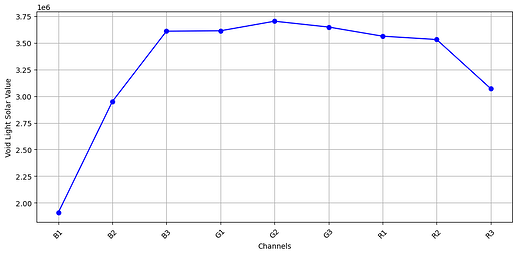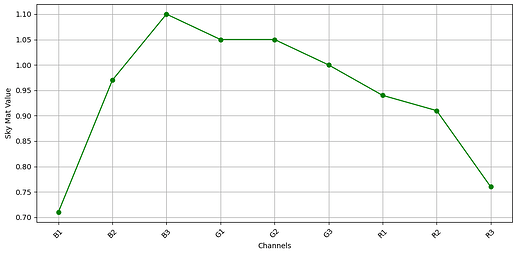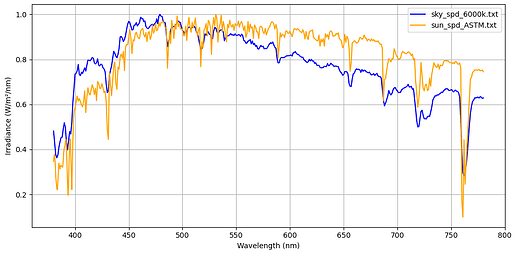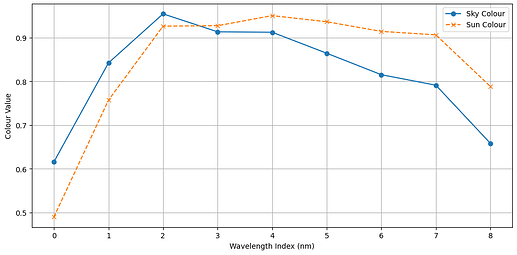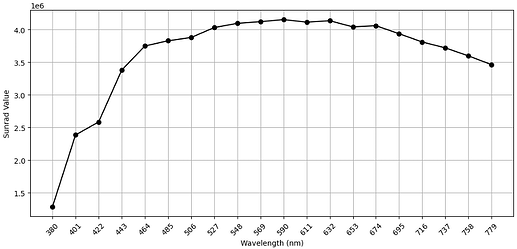Dear all,
I need to compare the 9-channel spectral sky that Lark uses and a spectral 18-channel sky from Radiance v6.0.
I need help understanding how I can compare these two skies. How can the sky and sun in Radiance v6.0 be separated, like in Lark? Is that even possible? Or the other way around: is it possible to make a visualisation of sky-sun-ground in Lark/gendaylit, similar to out_sky.hsr from Radiance v6.0 — for example, for pixel-by-pixel comparison?
Also, I notice a difference in the directional emitter between the two sky definitions for the same timestep, and I cannot explain it.
Can you help me with this? I’ve added example data for the same time step from both tools below.
Any suggestions are very welcome — many thanks!
–
Example data:
With Lark/gendaylit, I can access the 9-channel radiance using a light modifier for the sun and a glow sky material. An example for a single timestep is as follows:
-
void light solar:
-
skyfunc glow sky_mat
Sun and sky SPDs are read separately by Lark:
Which is simplified to:
With Radiance v6.0, there are two key parts: a light source with spectrum modifier (sunrad), and out_sky.hsr.
-
sunrad:
-
out_sky.hsr:
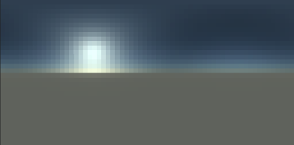
Directional emitters:
- Lark:
solar source sun
0
0
4 0.369629 -0.833813 0.410038 0.533000
- Radiance:
solar source sun
0
0
4 0.333397 -0.796601 0.504256 0.533
